The River Wye seems to epitomise our idea of the picturesque. It meanders past castles set high on the clifftop and loops around lush meadows bounded by steep wooded slopes.
Indeed the Wye river valley was heralded as the perfect landscape back in the 18th century. The idea of Picturesque, literally making a beautiful picture or painting, was popularised by William Gilpin. Gilpin wrote a best selling guidebook about his Wye Valley Tour.
In the 18th century travellers found that unforeseen circumstances abroad (the war with France) forced them to take holidays at home (sounds familiar?) The Wye Tour became increasingly popular and a package tourism of sorts was born.
These early travellers progressed by boat and their packing list included sketchbooks and telescopes. They wore stout shoes to climb up from the river and paint the landscape from key viewpoints.
As it’s 250 years since William Gilpin’s book popularised the Wye Valley. I decided to make my own 2 day Wye Tour by car from Ross on Wye to Chepstow, heading Over the bridge to Wales. We aimed to discover all the things to do in the Wye Valley as it meanders towards the Severn Estuary and then onward to the sea.
This article may contain affiliate links that provide commission on purchases you make at no extra cost to you. As an Amazon Associate I earn from qualifying purchases.
Ross on Wye
My trip down the Wye Valley started at the pretty town of Ross on Wye, known as the Gateway to the Wye. Here 18th century travellers on the Wye Tour would have boarded their boats in front of the Hope and Anchor inn.
Many of the buildings in this Herefordshire market town date back to the 17th and 18th century. You could easily while away an hour or two here before following the River Wye southwards.
Things to do in Ross on Wye
At the heart of the town is the Market House. It was built in the mid 17th century as the focus for markets that by then had been held in the town for many years. A visit to the Market House is one of the first things to do in Ross on Wye.
Markets are still held twice a week under the stone pillars and around the building. On the 2nd floor is Made in Ross, a shop selling locally produced arts and crafts. It’s the ideal place to pick up an authentic souvenir. The Market House is open daily currently from 11am.
I wandered around the streets that lead off from the Market Hall. It was easy to see that Ross on Wye is a haven for lovers of antiques and vintage. If this is your passion, check out the bottom of Broad Street.
Broad Street shopping
Here there are a number of shops selling everything from bric a brac to fine furniture. There’s a Ross Vintage shopping trail, with a leaflet that you can download. It lists 18 different shops that lovers of retro and vintage can find around town.
This part of the Wye Valley also seems to have an affinity for book lovers, with the Hay festival being held just upriver at Hay on Wye. There’s some nice bookshops, although sadly the atmospheric Ross Old Book Shop seemed to have closed.
I was also extremely tempted by the Tudor Sweets shop with its nostalgic range of cherry drops and licorice sherbet dips. There are lots of other independent shops stocking everything the country lady, salmon fisherman or walker in the Wye Valley might need.
Be sure to read about the foodie town of Abergavenny, Wales – things to do, where to eat and stay
The Prospect in Ross on Wye
After exploring the streets around the Market House, I wandered up the hill to St Mary’s Church. This landmark spire can be seen from all around the town.
It’s a pretty looking church, but mainly worth a visit for the small park beside it known as The Prospect. Here you can get an excellent view over the River Wye. You’ll also see the next hamlet of Wilton where the bridge crosses the river.
The Prospect was laid out in 1700 by John Kyrle, known as “The Man of Ross”. Originally this public pleasure garden covered a larger area, with stone gates and a sundial. A fountain provided clean water for the town.
You can see the black and white timbered house behind the Market House where John Kyrle lived. The pub that’s named after him is at the top of Wye street that leads down to the river. There’s more information about The Prospect on the Museumwithoutwalls.uk website.
Ross on Wye river walk
My walk took me down Wye street, with its pretty, pastel painted cottages to the Hope and Anchor Inn. Travellers on the Wye Tour would board the boats here to take them down river.
Although I didn’t see any pleasure boats, this is still one of the places that you can get dropped off by the many companies offering canoe hire and tours on the River Wye. Check out the River Wye canoe hire based nearby.
If you have time, take a 15 minute walk along the river until Wilton Bridge comes into sight. Here 18th century tourists on the River Wye tour might view the romantic ruin of Wilton Castle.
Originally a 12th century Norman castle, it was burned down in the English Civil war. It’s now privately owned and only occasionally open for guided tours but still makes a pretty sight.
Check out this guide to Big Pit and the Blaenavon Industrial Landscape in South Wales
Restaurants in Ross on Wye
Although I didn’t have time to stop in Ross on Wye, there are a few places I passed that looked worth a stop.
No 3 Ross on Wye (2 Gloucester Rd) – for lunch (check out the well priced lunch menu) or dinner with modern European style.
Tweet Bar & Kitchen (39 High Street) – more of an evening place for cocktails and dinner.
Truffles Delicatessen (46 High Street) – a good place to buy your picnic with deli sandwiches, cakes and local produce. Buy your lunch here and walk down to the riverside or up to The Prospect to find a picnic spot.
Hotels in Ross on Wye
If you’re looking for a hotel with location and heritage, you can’t beat The Royal Hotel in Ross on Wye. It is set on the hill below St Mary’s church, with views over the Wye.
This historic inn was the main place to stay for 19th century travellers starting their Wye Tour. Now it’s part of the Greene King group, with pub style food and rooms decorated in classic style.
A good alternative is one of the numerous bed and breakfasts in Ross on Wye like the Radcliffe Guest House on Wye Street close to the river. If you are travelling by car, check what parking is available before you book guest houses. They may be in historic properties that don’t have much parking space.
There are also some nice places to stay in nearby Wilton, just a short walk or drive from Ross on Wye, including Orles Barn Hotel. Set in a 17th century barn, this hotel is close to the A40 in Wilton, with a well regarded restaurant serving local and seasonal produce.
More information to plan your visit is available from the Visit Ross in Wye Tourism website | Parking available in several pay and display public car parks | Public toilets in Swimming Pool car park (charges) and Croft Court shopping centre
Explore Tredegar Wales – in the footsteps of Aneurin Bevan, father of the NHS
Goodrich Castle in the Wye Valley
A 15 minute drive from Ross on Wye through Wilton and along the A40 brought me to Goodrich Castle. This was the first stop for travellers on the Wye Tour, making a picturesque ruin set high above the river.
The red sandstone walls that remain today were built in the 13th century by French nobleman William de Valence, the uncle of the English King Edward I. Although William de Valence was viewed by the other English nobles as a foreigner, the castle at Goodrich was designed to be a powerful symbol of his power and royal connections.
Visitors entered over a drawbridge through a narrow gatehouse to enter the central courtyard. Entrances lead off it to the Great Hall, chapel, kitchens and private apartments of the Lords of Goodrich.
The information panels show the castle at the time of William de Valence and his wife Joan de Valence, who retained Goodrich castle after his death. During their tenure the castle was both a military fortress and a comfortable home that displayed the wealth and prestige of its noble owners.
In the castle courtyard, look out for the canon Roaring Meg and the pile of cannonballs. These were used when Goodrich castle was besieged by parliamentary forces in 1645.
Extensive Wye Valley views
If you get a chance, it’s worth climbing to the top of the keep. Be warned the stairs are very narrow and dark, but be rewarded with some extensive views over the Wye Valley.
Another scenic area that you can visit close to the Wye Valley is the Forest of Dean – read about all the things to do in the Forest of Dean
Goodrich Castle is managed by English Heritage and there’s a useful audio guide that you can download before you go. Find the Guide ID Podcatcher App then search for Goodrich Castle. Download the audio guide using the password EHGoodrichCastle.
More info: Goodrich Castle website | Open daily 10-5 and 10-6 on weekends Tickets from £9, free for English Heritage members + Parking charge | Toilets at the visitor centre by car park
Where to eat and stay near Goodrich Castle
There’s a pleasant cafe serving sandwiches and other refreshments at Goodrich Castle just outside the ticket office. You can use it even if you are not visiting the castle (parking charges apply). All the seating here is outside so this is one for good weather. There are also tables where you can eat your picnic.
For something more substantial, the best place is the Hostelrie at Goodrich. This gothic looking pub is located just by the turning from Goodrich village up to the castle, so you can’t miss it (closed Monday and Tuesday). They also have a few rooms if you are walking the Wye Valley Walk or touring the area and want a place to stay in this area.
Symonds Yat in the Wye Valley
The Wye River continues to loop around as it flows southwards, although the A40 brings you in only 15 minutes to Symonds Yat. This is one of the famous locations in the Wye Valley and is at the heart of the Wye Valley Area of Outstanding Natural Beauty. The designation was awarded in 1971 to allow the special landscape of dramatic limestone gorges, broadleaf woodland and lush meadows that border the River Wye to be protected.
Things to do at Symonds Yat
I headed first to one of the most famous viewpoints of the Wye Valley at Symonds Yat Rock. Set on a rocky outcrop high above the village of Symonds Yat, it’s the site of an iron age hill fort.
If the weather is good, this is a great place to start as there’s a large car park (charges apply) managed by Forestry England. There’s also toilets and the Symonds Yat Rock log cafe with outdoor seating close to the viewpoint.
The rock is also a lookout point for the Peregrine falcons that nest in the cliffs high above the river. Watch for other birds such as hawks, buzzards and owls. You’ll probably find a birdwatcher stationed there with a big pair of binoculars.
From the car park there are several marked walking trails and a cycling trail you can take. These are well signposted and range in length and difficulty – more information here. If you’ve brought a picnic, set it out at one of the wooden tables near the log cafe or around the woodland car park.
Walkers will want to explore some of the scenic trails in South Wales. Read about walking in the South Wales Valleys
Symonds Yat East
The village of Symonds Yat is divided into East and West by the River Wye. Two sides of the village were historically joined by hand pulled ferries secured by cables. These were operated all along the river by the inns that lined its banks.
You have to imagine the River Wye in past centuries as the main route of transport for goods and people through the area. It was the equivalent of a motorway with the riverside inns acting as service stations.
Now there are only two hand pulled ferries remaining. They are operated by Ye Old Ferrie Inn at Symonds Yat West and the Saracens Head Inn at Symonds Yat East.
When I visited, the ferries had been damaged by flooding in February 2020 when the Wye breached its banks. The nearest crossing point for Symonds Yat is the road bridge some way up river. Or, the Bibins rope bridge is for walkers downstream.
This means that you may need to plan which side of the river to visit, via car or walking and it’s probably most convenient to start at Symonds Yat East as I did.
Rather than moving my car from the Symonds Yat Rock car park, I decided to walk down the hill on the Highmeadow Trail. This was a pleasant 20 minute walk downhill to the river.
If you decide to drive down, the road is quite narrow but there are two public pay and display car parks (coins only) by the river. One is by the Wyedean canoe and Adventure Centre and the other by the Royal Lodge.
A stroll along the river
As I walked along the river, I spotted the Kingfisher cruises river boat outside the Saracens Head Inn. It was about to leave so I boarded (£8.50 pay on board) for a 45 minute cruise up river.
The pleasure cruise seemed to be running hourly (information from the Saracens Head) and made a relaxing way to see the river. You’ll hear commentary about points of interest along the way.
The cruise took us first up river passing geese, ducks and heron. We saw numerous leisure canoes which are easy to hire for a few hours to explore the river.
On our return we went a short way downstream but there are rapids just below Symonds Yat East with a course used by kayakers. We turned round here and returned to disembark at the Saracens Head Inn.
The interesting commentary from the Kingfisher’s captain told us about the salmon fishing that is popular on the River Wye. We learned about the recent floods that had seen most of the pubs and buildings along the river flooded up to their ground floor windows. As a result many places were closed for repairs.
The Wye Valley canoes
Canoeing is one of the most popular River Wye activities to try and there are many companies that will rent you canoes for a day or few hours. You’re dropped off higher up the river, so you can make your way down with the current.
At Symonds Yat East there’s a large canoe centre at WyeDean Canoe and Adventure Centre. Here they will rent you canoes as well as arrange other adventure activities such as paddle boarding, rock climbing and abseiling.
It’s advisable to pre-book these activities as you will need to be dropped off with the canoes to a point higher up the river. But, if you just want to try a canoe out for an hour you can turn up here and see if they have some available for hire.

Other canoe hire specialists in the area include Canoe the Wye at Symonds Yat West, Wye Adventures at Symonds Yat, so check out what the different companies can offer.
Symonds Yat river walk
There are numerous walks in the Wye Valley. If you want a quick one from Symonds Yat East, just follow the river path downstream until you get to the Bibins rope bridge across the river. Walk back on the other side to where you can take the hand drawn ferry back across to the Saracens Head Inn.
This is marked on the Symonds Yat trails map as the Peregrine path. Be sure to check first if the hand drawn ferry is operating, as otherwise you’ll need to retrace your steps to cross the river again at the Bibins rope bridge.
The Chalet at Symonds Yat
There’s a striking red chalet at Symonds Yat East, set on the hillside above the Saracens Head Inn. It was brought to the valley by train in 1912 as a flat pack house made of Norwegian pine. More recently it has found fame as the home of the main characters Otis and Jean in the Netflix series Sex Education.
I’ve enjoyed watching the series, especially the scenes set in the Wye Valley. Otis and his mother Jean, played by Gillian Anderson, hang out on the terrace with spectacular views over the river. The Chalet is also available to rent as a holiday house.
Although The Chalet is a private house with a gated driveway, you can get a closer look if you walk up the forest path to Symonds Yat Rock that starts beneath the Royal Lodge.
Where to eat at Symonds Yat East
There are a couple of pubs where you can eat at Symonds Yat East, the Saracens Head Inn and the Royal Lodge. The Saracens Head Inn is the most obvious choice. There’s an outdoor terrace as well as inside seating and a riverside kiosk selling drinks, snacks and ice creams.
The Royal Lodge Hotel a little further along the bank also serves lunch and dinner. They too have an outdoor terrace above the car park, overlooking the river.
Hotels at Symonds Yat East
If you’d like to stay in Symonds Yat East, there’s accommodation at both the Saracens Head Inn and The Royal Lodge. I haven’t stayed in either, but for position I would probably choose The Royal Lodge. It has a quieter setting, more space and a garden area for guests. For style I’d choose the Saracens Head which has more stylish decor.
Saracens Head Inn – One of the ancient inns on the river with 12 bedrooms and stylish, contemporary decor.
The Royal Lodge – 26 comfortable guest rooms of various sizes on the site of a royal hunting lodge. Originally had its own private steam railway station that ran until 1959.
There are also numerous bed and breakfasts in the area that are a short walk or drive from Symonds Yat – or take a look at all the other hotels in the Symonds Yat area.

Symonds Yat West
After exploring Symonds Yat East for an hour or so I took the car and drove to take a quick look at Symonds Yat West on the other side of the river. I crossed at the road bridge upstream since the hand drawn ferries were not operating at the time of my visit.
If you approach from the A40, take the turnoff at Whitchurch signposted for Symonds Yat West. A short way down this road you’ll find Symonds Yat West Leisure Park, with a pay and display car park and a number of things to see.
I was curious to take a look at the St Dubricius church by the river, which had been pointed out on the Kingfisher cruise. This medieval church is a popular setting for weddings and funerals.
There’s a jetty for guests to arrive by boat, as they would have traditionally done in the past when the river was the main way of getting around. It’s worth paying a visit in June when the tulip tree here is covered with yellow and orange blooms.

Other things to do in Symonds Yat West
The Wye Valley Butterfly Zoo – A glass indoor butterfly house that’s full of exotic butterflies, with a mini golf course outside.
The aMazing Hedge Puzzle – This Jubilee maze was planted in 1977 and is a traditional hedge maze with a romantic temple at the centre.
River Wye Camping – a pleasant campsite and caravan park with views over the River Wye.
Lady Cristina River cruise – similar to the Kingfisher Cruises, this will take you on a 45 minute cruise up and down the river between Easter and October.
Canoe Hire from Ross on Wye Canoe Hire or Wye Canoes
There was also an amusement arcade, ice cream kiosk, tea room and the Riverside bar next to a residential caravan site.

If you are looking for a pub lunch in this area, try the Old Court Hotel or continue up the road to Ye Old Ferrie Inn. For the latter, be aware that the road gets very narrow. There’s a car park by the river for pub customers or you can park in the pay and display car park just before it at the Paddocks Hotel.
You can also book accommodation at both the Old Court Hotel and Ye Old Ferrie Inn. Or, stay at one of the many bed and breakfasts around Symonds Yat.
Monmouth in the Wye Valley
The riverside town of Monmouth, capital of Monmouthshire was traditionally the halfway point of the Wye Tour. Here 18th century travellers would spend the night, before continuing their river journey down to Chepstow.
The town dates back to Roman times, built at the crossing place of the river, where the smaller River Monnow flows into the Wye and trade on the river could be controlled.
Things to do in Monmouth
I only passed through Monmouth briefly but wish I’d had more time. There a number of things to do in Monmouth that would make a pleasant hour or two looking round.
The heart of the old town is the Shire Hall, an imposing stone building that was built in 1724. This was the site of the Shire court, with markets being held in the surrounding square.
The last treason trial was held after the Chartist uprising of 1839 was held here. You can also see the statue in front of the building of Charles Rolls, founder of Rolls Royce motor company who grew up in Monmouth.
Monmouth also has connections with Admiral Horatio Nelson. He visited the town in 1802 as part of the Wye Tour and was much feted during his visit.
Until the 1850s, there was a strong shipbuilding trade at Monmouth. Nelson was well aware of the importance of wood that came from the forests of the Wye Valley.
A Naval Temple had been built by public subscription the year before his visit, on the Kymin Hill overlooking Monmouth. It commemorates the role of Nelson and other admirals in the victory over France during the Seven Year War.
During Nelson’s visit with Lady Hamilton and her husband Sir William, he had breakfast at the small circular banqueting house known as The Round House on Kymin Hill (now managed by the National Trust) and admired the fine views.
Nelson Museum and Garden
In Monmouth the Nelson Museum founded in 1924 includes a collection of items relating to Lord Nelson. There is a Nelson Garden with a small pavilion on the spot where Nelson passed the evening with his friends.
View some remains of Monmouth’s medieval past in the town. You’ll see the ruined tower of the old Monmouth Castle and the Monnow bridge and gate over the River Monnow.
The gatehouse was originally part of the town fortifications. Over time it became a toll booth to control entry into the town.
There’s a great walk nearby that takes you along the Monmouthshire canal. Discover the industrial heritage of this area – read about walking along the Monmouthshire and Brecon canal
Where to eat and stay in Monmouth
The Whitebrook – if you’re looking for a special experience, book into this restaurant with rooms that’s a short drive south of Monmouth. This Michelin star restaurant offers seasonal menus that incorporate local and foraged plants from the Wye Valley. There are 8 bedrooms decorated in contemporary style.
The Stonemill at Rockfield – In a village just outside Monmouth, The Stonemill has a charming rustic atmosphere with a menu based on local and seasonal produce. Accommodation is also available in their two and three bedroom cottages, Steppes Farm Cottages. This would make a good base for seeing the area.
If you’re planning a picnic, the Marches Delicatessen (102 Monnow Street) is a good place to pick up local cheeses and other artisan produce from the Wye Valley.
Tintern in the Wye Valley
As we drift southwards, the next stop on our picturesque Wye Tour is Tintern. It’s most famous for the massive ruins of Tintern Abbey that dominate the prime spot on the banks of the river.
Tintern Abbey
Founded by the Cistercian monks in the 12th century, Tintern Abbey must have once been an enormous hive of activity. It extends over a large area with cloisters, gardens, an infirmary, refectory and guest accommodation for Medieval travellers.
The Abbey has been one of the most popular Wye Valley attractions since the 1750s, the interior of the nave is laid to grass to make it easy for visitors to walk through the ruins.
At the time of my visit the nave was closed for repair of the stonework. Unfortunately it was not possible to walk inside the buildings where you get some of the most atmospheric photos.
However you can still wander around the outside of the abbey structure and through the ruins of other monastery buildings. Watch for the information signs to tell you what each building was used for.
More info: Tintern Abbey CADW website | Parking outside the Abbey (charges apply) | Toilets inside the Abbey visitor centre and public toilets also adjoining the car park | The Anchor Inn is a pleasant pub for lunches next to the Abbey. There is also The White Monk, a small tea shop and deli shop serving ices creams.
The Wireworks Bridge
In the 1870s, the railway reached Tintern, allowing even more people to visit. This now quiet part of the valley was busy with industry with several foundries specialising in the production of iron wire.
You can learn more about this industrial heritage by following the Angidy Trail, a 5 mile walking route through the Angidy Valley at Tintern.
There’s more fascinating industrial heritage to be found in the South Wales valleys which are very close. Read about 16 fun things to do in the valleys of South Wales
The Wireworks Bridge is part of this industrial history and crosses the Wye within sight of Tintern Abbey. It once brought the railway across the river to the valley mills and furnaces. This picturesque metal bridge has more recently found fame as one of the filming locations used in the Netflix series Sex Education.
The bridge is also popular with walkers and by crossing it you can follow a steep path up the hill to a viewpoint. Known as The Devil’s Pulpit, it offers a fine view back over Tintern Abbey.
I only had time to follow the path a short distance over the bridge. Otherwise I would have liked to have climbed right to the top for some nice photos!
Wye Valley Sculpture Garden
A little further up the valley I visited the Wye Valley Sculpture Garden. It is open through the summer by appointment for groups and in February when the woods are filled with snowdrops.
Photographer and artist Gemma Wood has created the garden over the last two years, by adding her own sculptures and remodeling the mature garden. It was originally created by her parents who ran one of the first vegetarian guest houses in the area.
This beautiful garden established on the south facing slopes of the valley combines the formality of paths, arbours and stonework, with a wilderness of mature trees, shrubs and borders combined with an orchard and woodland area.
As you wander around the garden, Emma’s own sculptures are thoughtfully placed to draw the eye. Her organic forms seem in harmony with their natural surroundings made from local wood, slate or stone.
The garden is full of atmosphere, with the rich smell of apples on the ground in the old orchard. Gnarled trees reach their lichen covered branches to the ground like fingers.
On one weekend in February the garden opens to show off the collection of snowdrops created by Gemma’s parents that clothe the ground in the woodland area. Gemma runs the garden single handed, so it’s currently only open on Sundays in the summer. I highly recommended a visit if you’re there at that time.
Parva Farm Vineyard
Close by is the Parva Farm Vineyard, run by Judith and Colin. They have a smallholding with sheep and cattle as well as making wine, mead and cider. It’s believed that this sunny, south facing slope was used to cultivate vines by the Cistercian monks of Tintern Abbey and there’s a self guided tour route around the vineyard.
Different varieties of grapes are grown here to show visitors. Most of the wine is made from varieties such as Pinot Noir, Bacchus, Muller Thurgau and Seval Blanc, with the white wine varieties growing best in our cooler northern climate.
The farm shop is open several days a week and you can then make an informal wine tasting. You can buy the delicious wines, including the bottle of white sparkling wine I had to take home, the Wye Valley’s answer to champagne!
Kingstone Brewery
Just beside the Wye Valley sculpture garden, another enterprise that’s well worth a visit is Kingstone Brewery. This four barrel microbrewery creates real ales that are brewed and bottled on site.
Although tasting sessions are currently on hold, you can visit the small brewery shop and purchase a few different bottles. There’s a selection of nine different ales from the amber Abbey Ale to the No 1 Premium Stout and malty Tudor Ale. Also look out for the Kingstone beers on draught in local pubs and in bottles to purchase from local shops.
Looking for an interesting place to stay that reflects the rustic character of the Wye Valley? There’s simple accommodation beside the brewery in 5 wooden cabins and one converted horsebox at The Hop Garden.
Each of the cabins has a bathroom and kitchen, with wood burning stoves. They give that feeling of glamping in the woods, but with all the comforts of home.
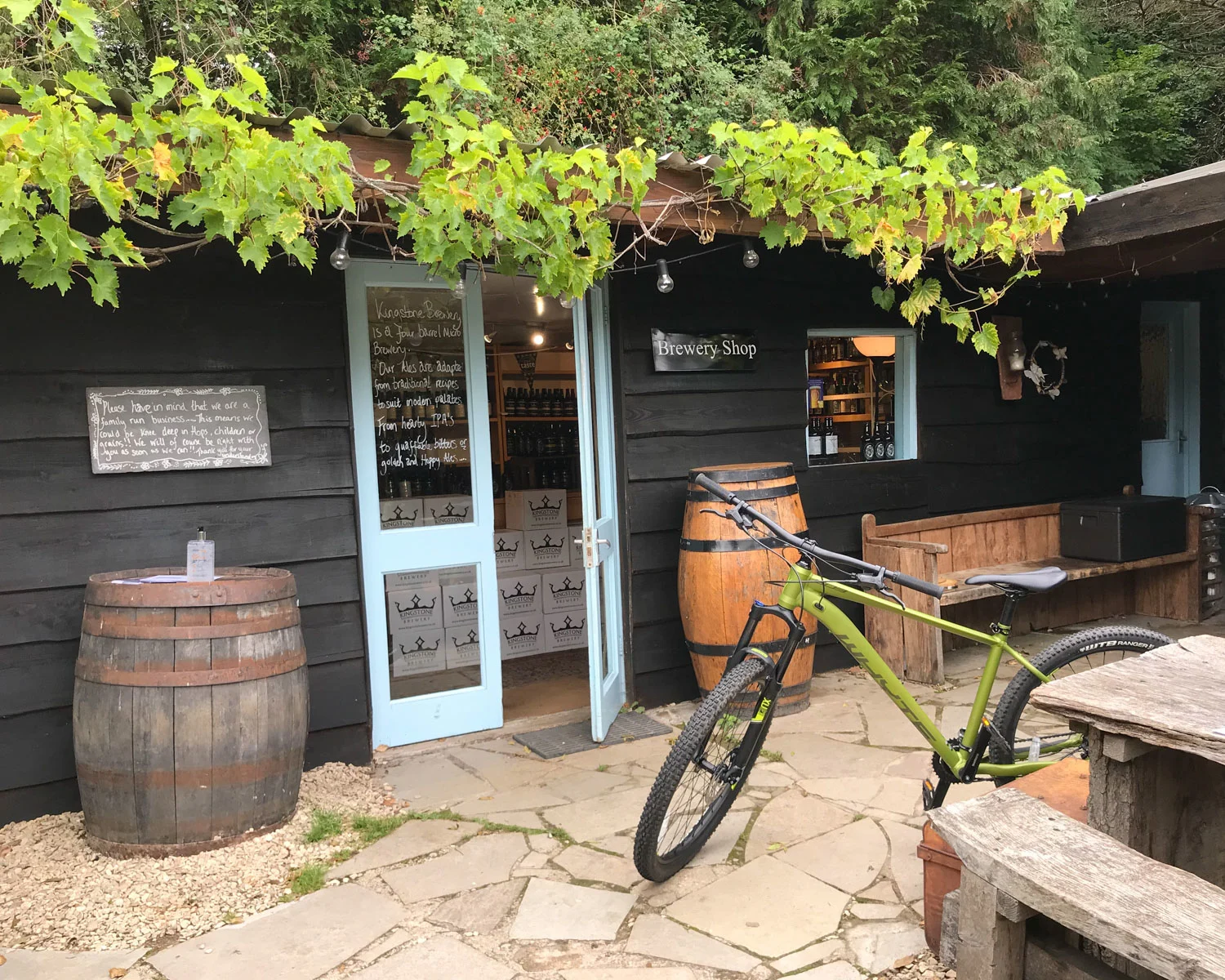
Also based at the same location is The Wye Valley Experience. It offers mountain bike hire and canoe experiences in the Wye Valley. They also have e-bikes for those who want to have all the fun but none of the pain!
Tintern Old Station
After having visited the Wye Valley Sculpture Garden, Parva Farm Vineyard and Kingstone Brewery, which are all clustered together, I was ready for a spot of lunch. I found a great place just across the road at Tintern Old Station tearoom.
As the name suggests, the tearoom is located in what was once the Victorian station for Tintern. The line running from Chepstow to Monmouth closed in 1959.
This 10 acre site is now a park and visitor attraction. You’ll find an old signal box and railway carriages as well as wooden sculptures of legendary figures and a children’s play area.
This is a lovely place to stop if you are walking on the riverside path from Tintern. Enjoy a barista style coffee, sandwiches, cakes and light meals at lunchtime until mid afternoon.
Where to eat in Tintern
In addition to the places mentioned you might buy local beverages such as the Parva Farm Vineyard and Kingstone Brewery. There are numerous nice pubs in Tintern where you can stop for lunch or an evening meal.
Look out for The Wild Hare (formerly The Royal George) where there’s plenty of parking, The Rose and Crown or The Anchor Inn if you’re looking for traditional pub fare. Also worth a stop is The Filling Station, a small cafe near Tintern Abbey which is popular with walkers and cyclists.
Where to stay in Tintern
While I didn’t stay overnight in Tintern, there are a few places in the village or nearby that looked very nice.
The Wild Hare – This country inn in the heart of Tintern has 14 stylishly decorated bedrooms, 4 of which are dog-friendly (formerly The Royal George.)
The Chicken Shed – This 4 bedroom cabin just outside Tintern sleeps 8 people and has won awards for its architecture. It features floor to ceiling windows, polished concrete floors and modern design with cosy comforts like a wood burning stove.
Hidden Valley Yurts – For those who love glamping, this meadow site just outside Tintern has 5 Mongolian Yurts and The Lake House, a 2 bedroom self catering cottage.
Penterry Holidays – Orchard Cottage is a 1 bedroom stone cottage. Anne’s Retreat is an en suite 1 bedroom converted shepherd’s hut, either of which would make a cosy retreat for couples.
The Hop Garden – Five wooden cabins and a converted horsebox with bathroom, kitchen and wood burning stoves. A feeling of glamping in the woods, but with all the comforts of home.
Take a look at more hotels in Tintern and the many B&Bs available in Tintern with AirBnB
Chepstow
Chepstow was the final stop on my Wye Valley tour. Here the River Wye widens out to meet the Severn Estuary and flows into the Bristol Channel.
Where the river appeared bright and sparkling further up stream, by Chepstow it becomes tidal, looking flat and muddy. It makes lazy curves as it makes its way towards the sea.
Things to do in Chepstow
The most popular of things to do in Chepstow is a visit to the castle that sits high on a cliff, guarding the entrance to the town. Chepstow Castle was built above the Wye, on a strategic curve of the river where it was easy to control the trade passing up the Wye as far as Hereford.
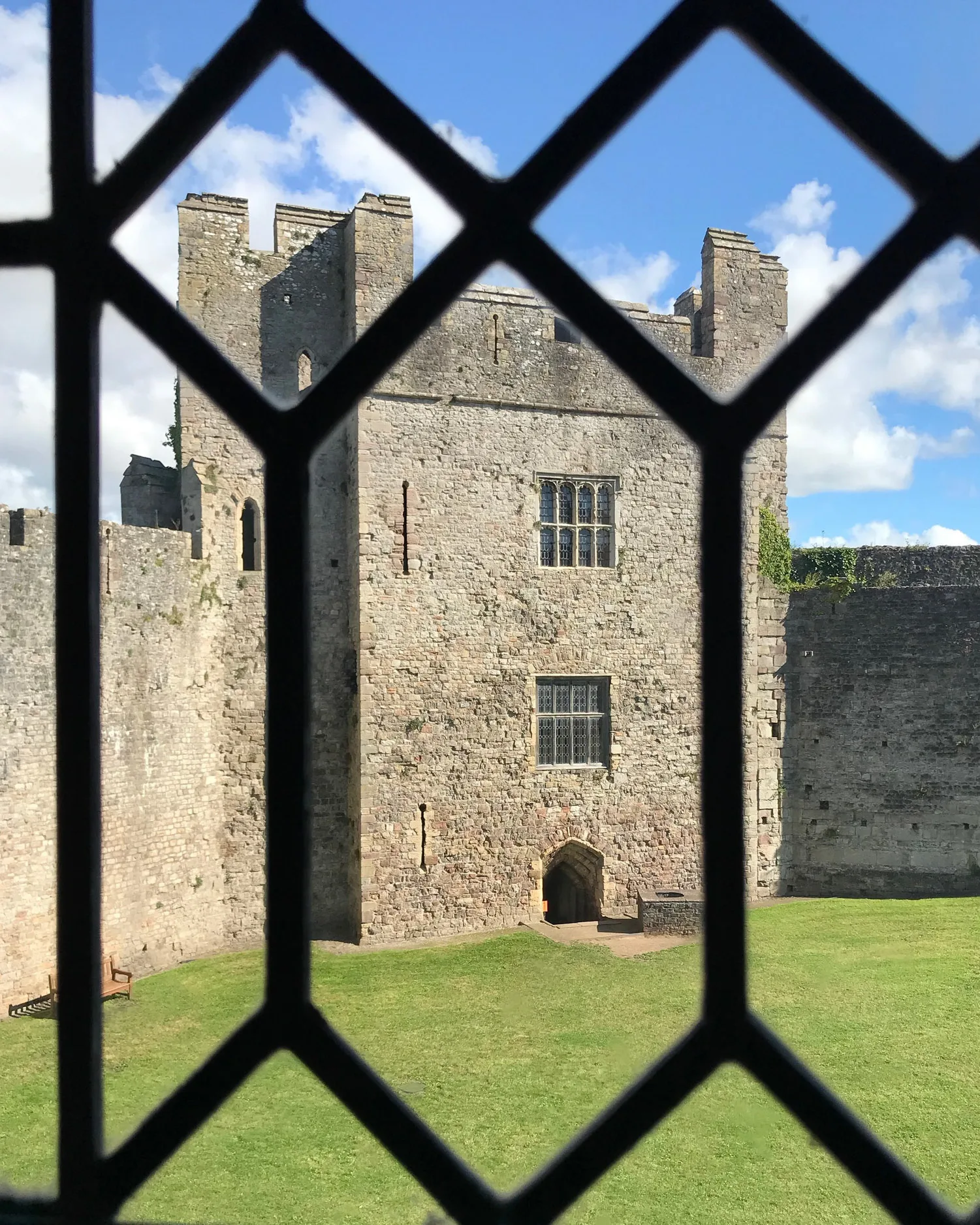
On one side all windows of the castle look towards the river. Gunports in the ramparts on the other side could be trained to resist any attack coming from the side of the town.
The castle was largely built in the 12th century by William Marshall, a talented knight who attracted royal patronage. He became a friend and loyal supporter of King Henry II and his son Richard the Lionheart. This was clearly a castle that was built to mean business!
More info: Chepstow Castle website with CADW | Car Park in front of the car park (charges) | Public toilet in the car park | There is no cafe at the castle but lots of places to eat on the riverside or a short walk away in the town.



Opposite the castle car park is the Castle Museum which was closed when I visited. It houses a collection of engravings, prints and paintings from the artists who were inspired by the Wye Tour.
The Old Wye Bridge
From here, it’s pleasant to continue down Bridge Street to the pretty iron work of the Old Wye Bridge which was built in 1816 to replace older wooden bridges. This was the main crossing point of the river at Chepstow until Brunel’s railway bridge was built in the 1850s.
The graceful curves of the Old Wye Bridge are underpinned by sturdy stone pillars that need to withstand the high tidal range and strong currents of the River Wye at this point.
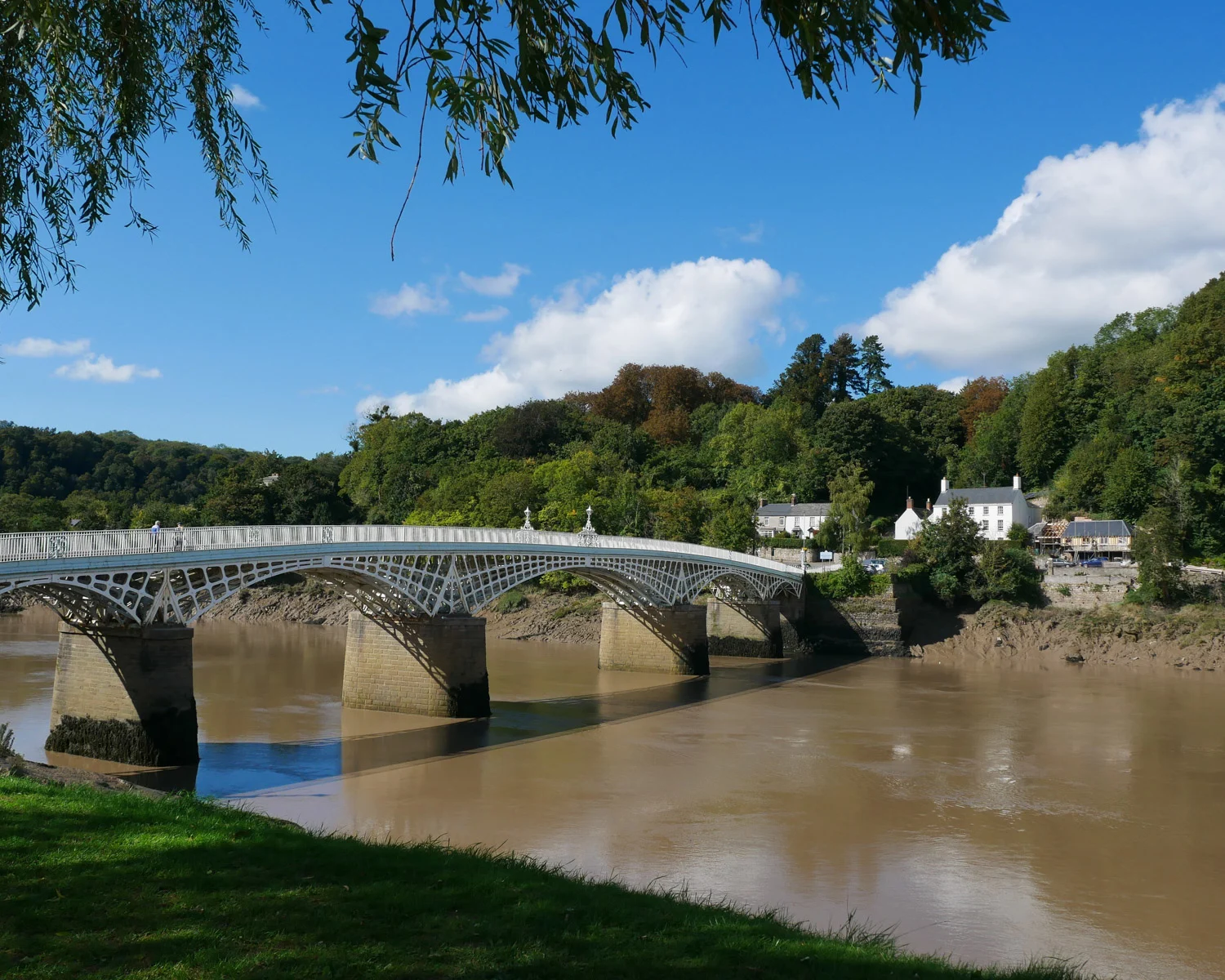
Continuing past the bridge is a pretty stretch of river with a couple of pubs where you may like to pause for a drink and a bite to eat. Try the Riverside Winebar and the Boat Inn, both of which have outside seating.

As an alternative you could skirt around the grassy banks below the castle, the stone walls rising grey above you on the path that takes you to the top of the town. Then walk back through the 16th century town gate. This was the place in the medieval city walls where people might pay a toll as they came to market or trade in Chepstow.

The high street that leads down from here is full of the normal shops. There are some pretty streets in the lower part of town, where elegant Georgian houses mingle with much older cottages.
Where to stay in Chepstow
18th century travellers would traditionally end their Wye Tour at The Beaufort, a 16th century coaching inn in the heart of Chepstow. If you want somewhere a little more luxurious, Delta Hotels by Marriott St Pierre is set in a 14th century manor house on the edge of Chepstow.
Take a look at more hotels in Chepstow and the many B&Bs available in Chepstow with AirBnB.
Eagle’s Nest in the Wye Valley
For one final view over the Wye Valley I drove up to the Eagle’s Nest at Wyndcliff, close to the village of St Arvans just north of Chepstow. One of the popular walks for travellers on the Wye Tour was through the nearby Piercefield Estate. You can follow using the Picturesque Piercefield Walk leaflet you can download here.
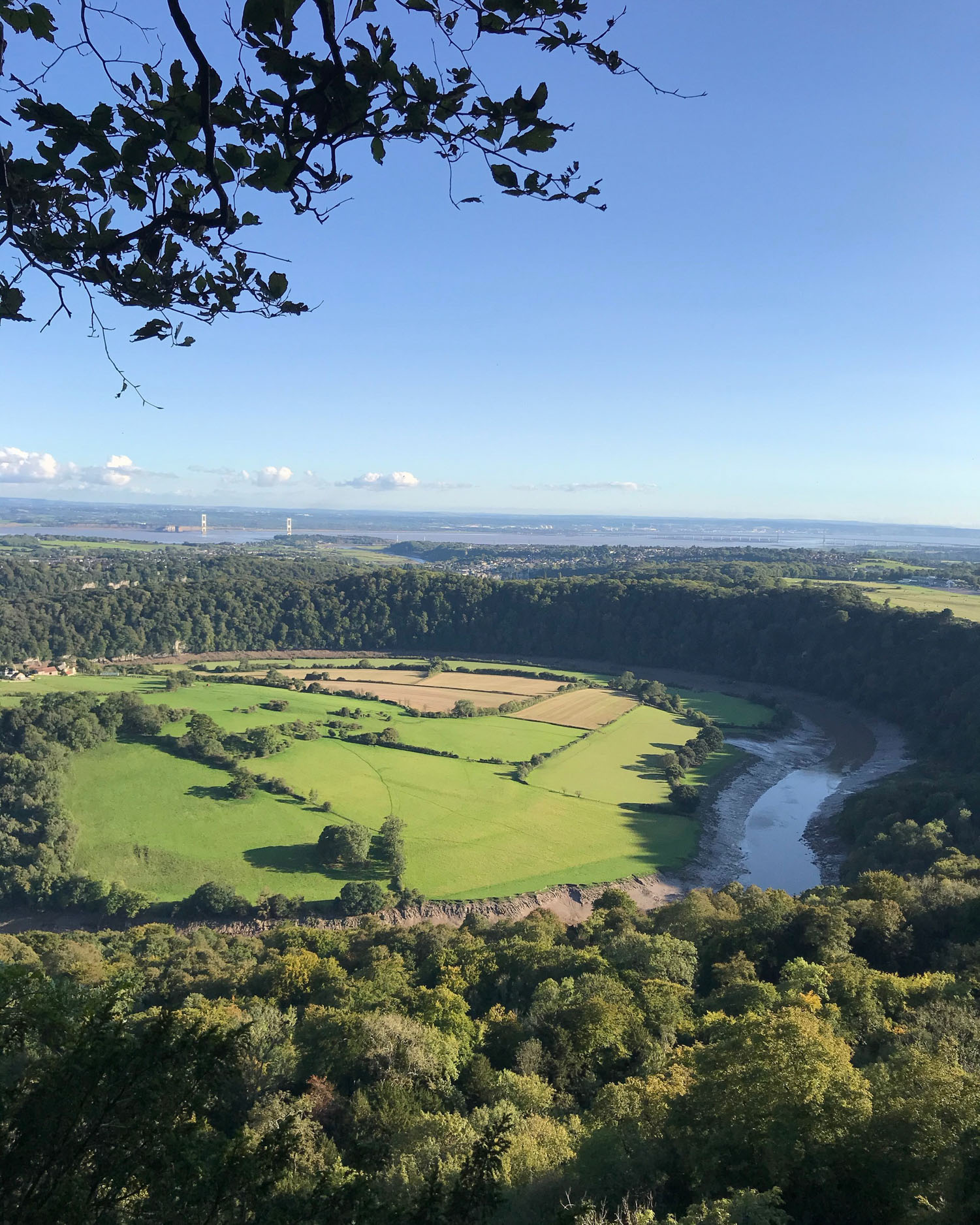
The walk starts at Chepstow, taking you past Piercefield House and some of the picturesque viewpoints. There’s names like the Giant’s Cave, Druid’s Temple and Lover’s Leap. Next you’ll climbing steeply up to the Lower Wyncliff and then the upper Wyndcliff, culminating in the Eagle’s Nest viewpoint.
I didn’t have time for the whole Piercefield walk which would take a full day. Instead I just drove up to the Upper Wyndcliff car park. Then I walked for around 15 minutes on the path through the woods to reach the Eagle’s Nest.
Expansive view over the valley
It’s certainly well worth the effort as on a clear day you can see right over the Wye Valley to the Severn Estuary. See the two Severn bridges in the distance and the Wye river curving through open fields and woodland below you.

It made a wonderful end to my two day tour of the Wye Valley which certainly turned out to be as picturesque as it promised.
For more information to plan your Wye Valley Tour, check out the following websites;
Visit Monmouthshire | Forest of Dean and Wye Valley Tourism | More ideas that are just @Overthebridgetowales | Wye Valley Area of Outstanding Natural Beauty
You may also enjoy
Read next
Read about 10 things to do in The Forest of Dean which is very close to the Wye Valley and a magnet for foodies and outdoor lovers.
Map of the Wye Valley
You can find all the places mentioned on this handy Google map of the Wye Valley below.
Getting to the Wye Valley
Wye Valley is situated on the border between England and Wales in the west of the United Kingdom. The section described from Ross on Wye to Symonds Yat lies in the English county of Herefordshire.
And, the section from Monmouth to Chepstow lies in the Welsh country of Monmouthshire, with the river itself often forming the border between England and Wales.

Visit by Car
Arriving from London and the south of England, take the M4 motorway and cross the Severn bridge via the M48 to reach Chepstow. From the north you will arrive via the M5 and M50 to reach Ross on Wye.
The A466 is the most picturesque route through the Wye Valley as it follows the course of the river from Chepstow to Monmouth. North of Monmouth the A40 is the fastest though not the most pretty route.
Arrive by Plane
For international visitors, a 1 or 2 day visit to the Wye Valley could easily be added to any tour of Wales, the Cotswolds or the West of England. In this case the most convenient international airports are London Heathrow (2 hrs to Chepstow).
Or, Bristol (45 mins to Chepstow) Cardiff (1 hr to Chepstow or Birmingham (1 hr 15 mins to Ross on Wye). At all these airports it will be possible to hire a car to visit the Wye Valley, which is the most convenient means of transport.
By Train and Bus
If travelling by train, there are stations at Chepstow and Gloucester but no trains run through the Wye Valley itself. Intercity coach services are also available from National Express.
Local buses run through the Wye valley with further information available for Monmouthshire buses and Herefordshire buses. However if travelling by public transport you may need to allow more time and plan your routes according to the bus timetables, combined with walking or cycling.
Guided tours: If you do not drive and only have limited time available, you may wish to engage one of the local tour guides who can drive you or make your transport arrangements.
Pin it
Some of the tickets to places I visited were provided* by Monmouthshire Tourism as part of the @Overthebridgetowales project.
* More info on my policies page
This article is originally published at Heatheronhertravels.com



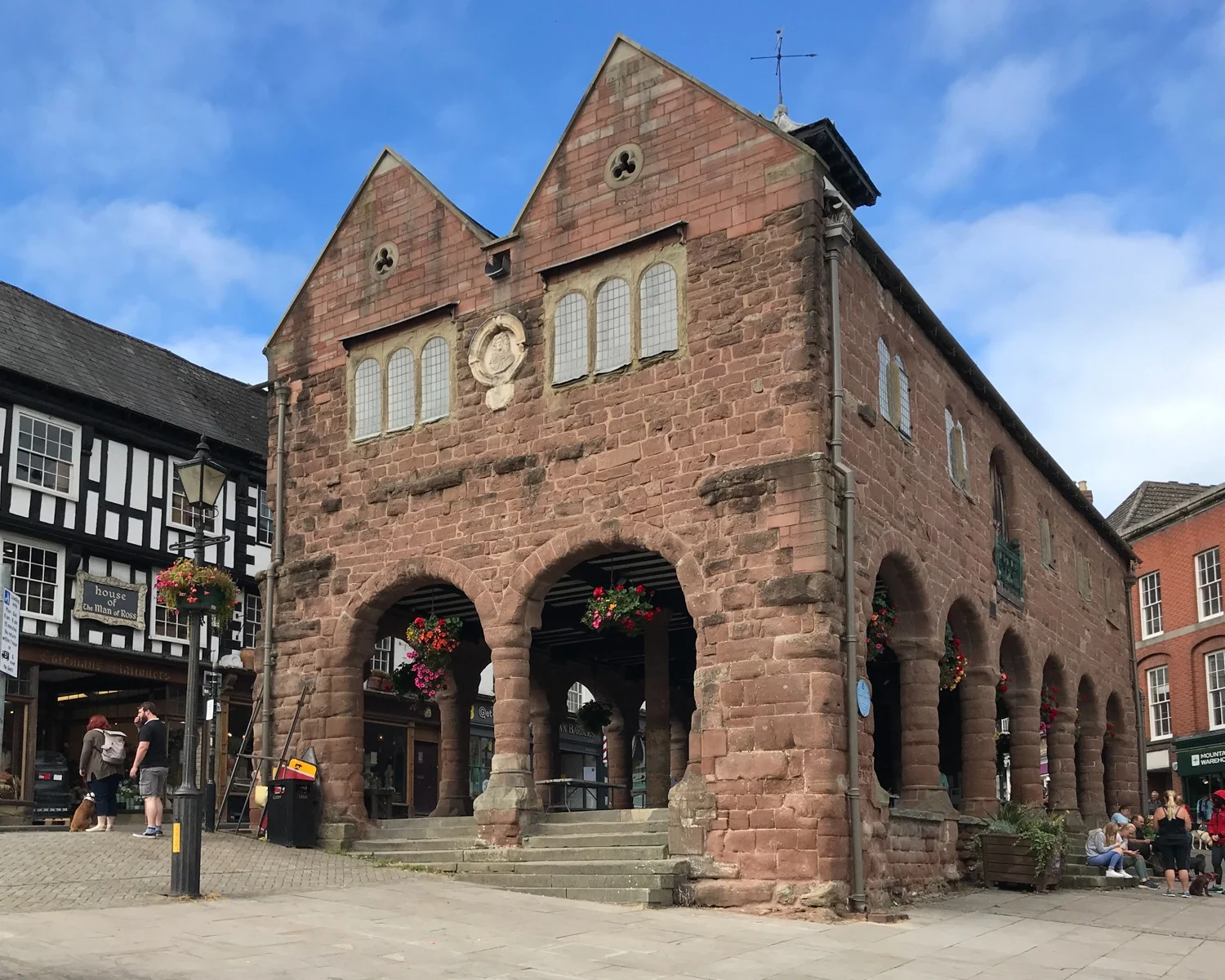









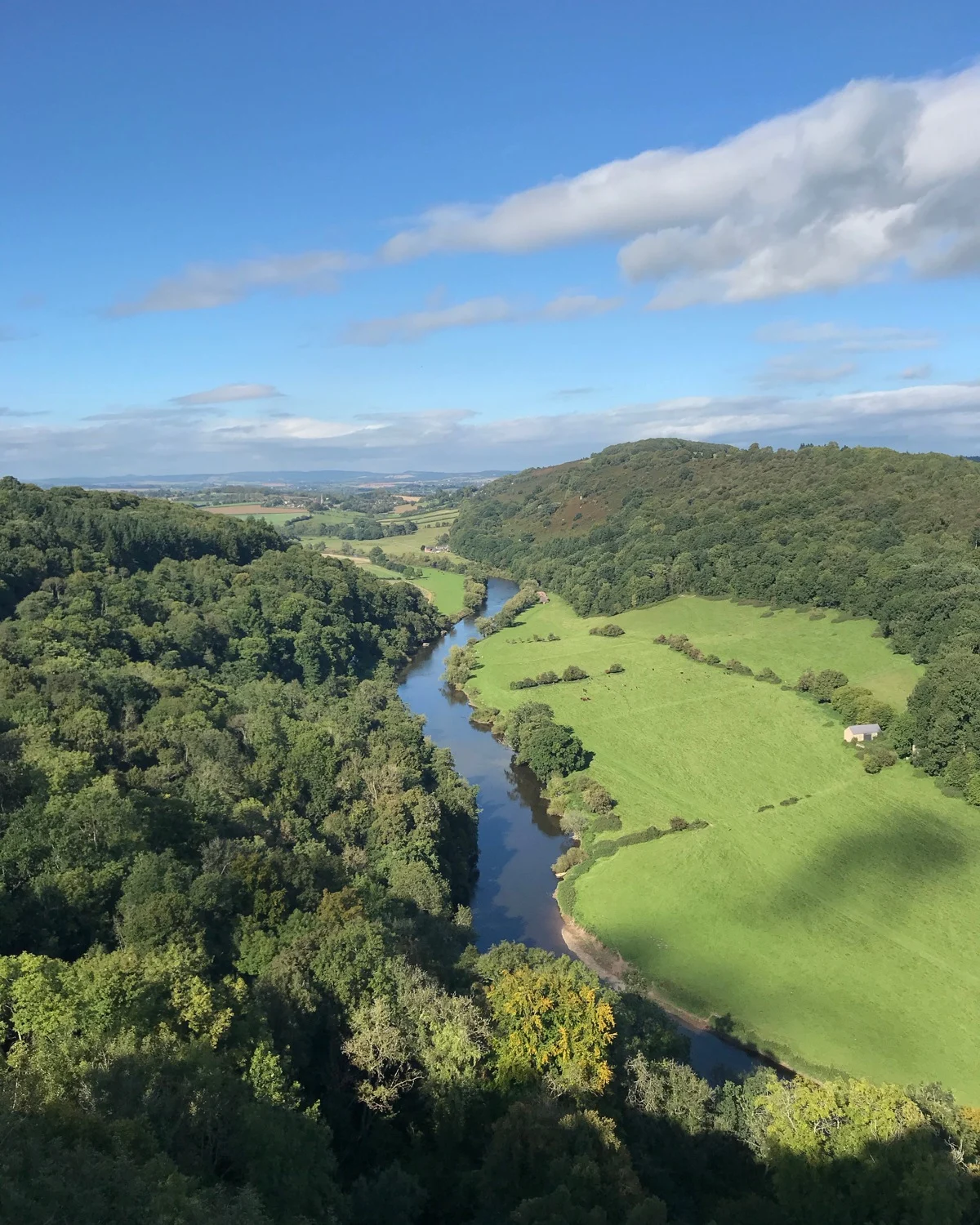











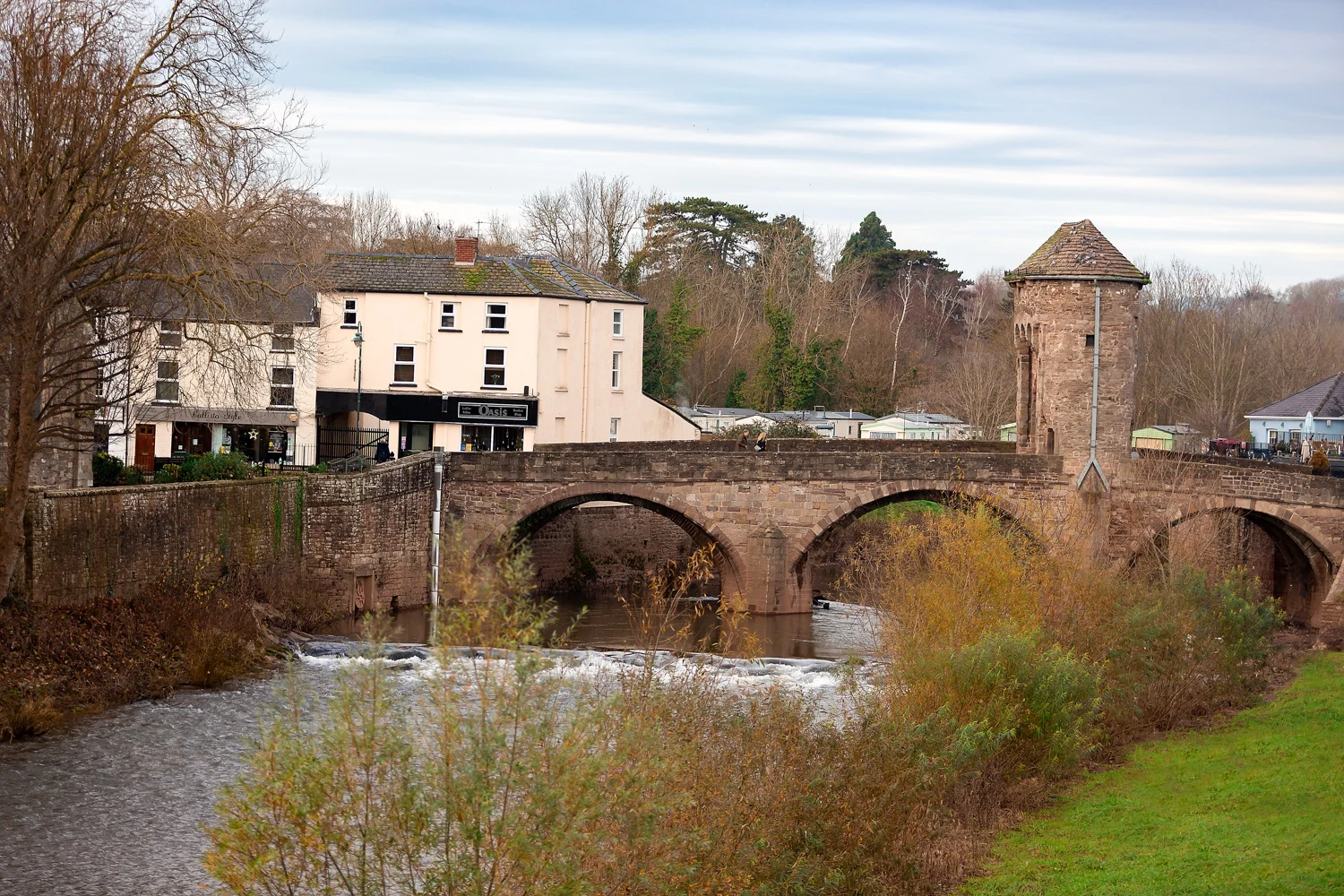

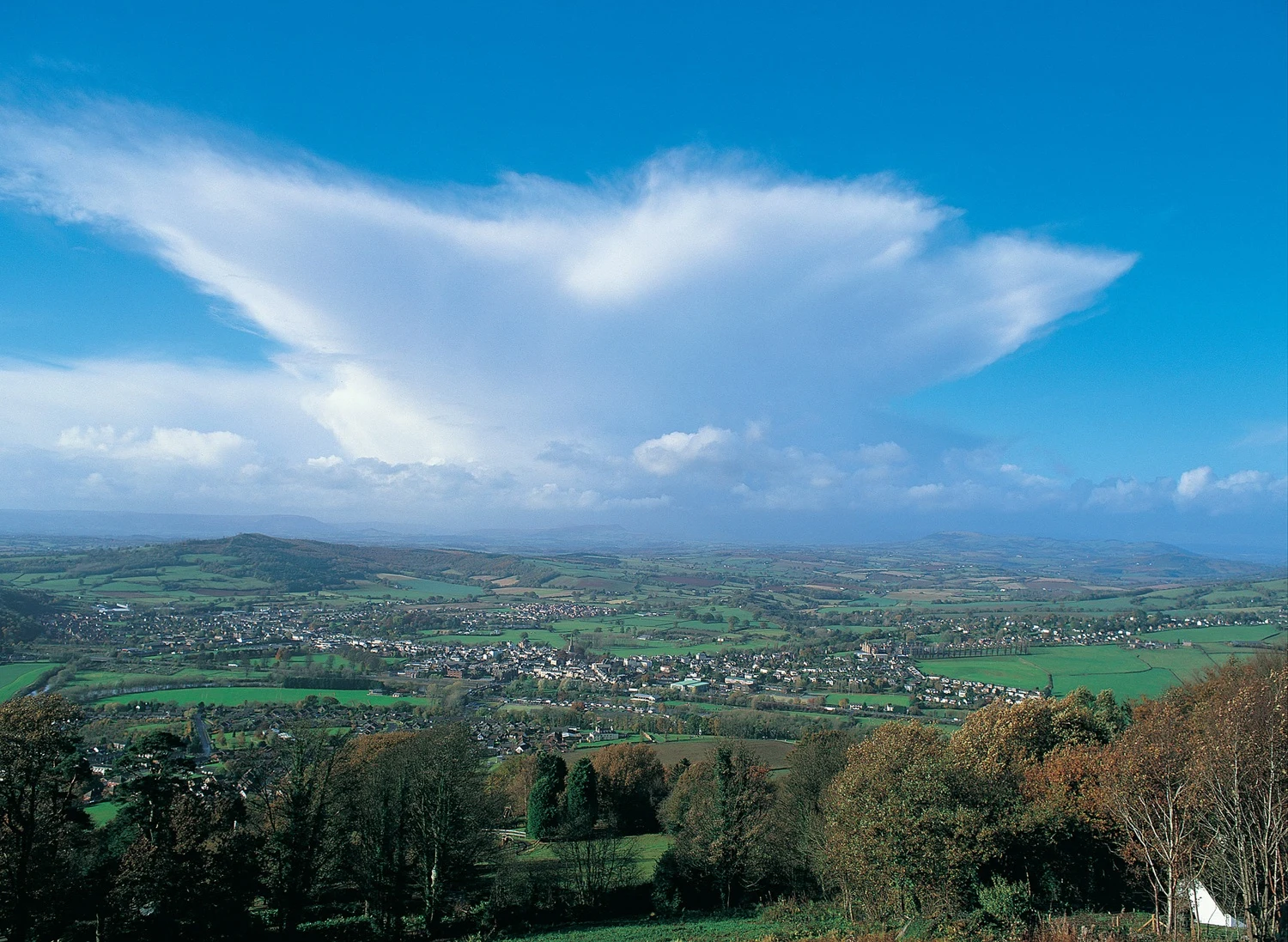

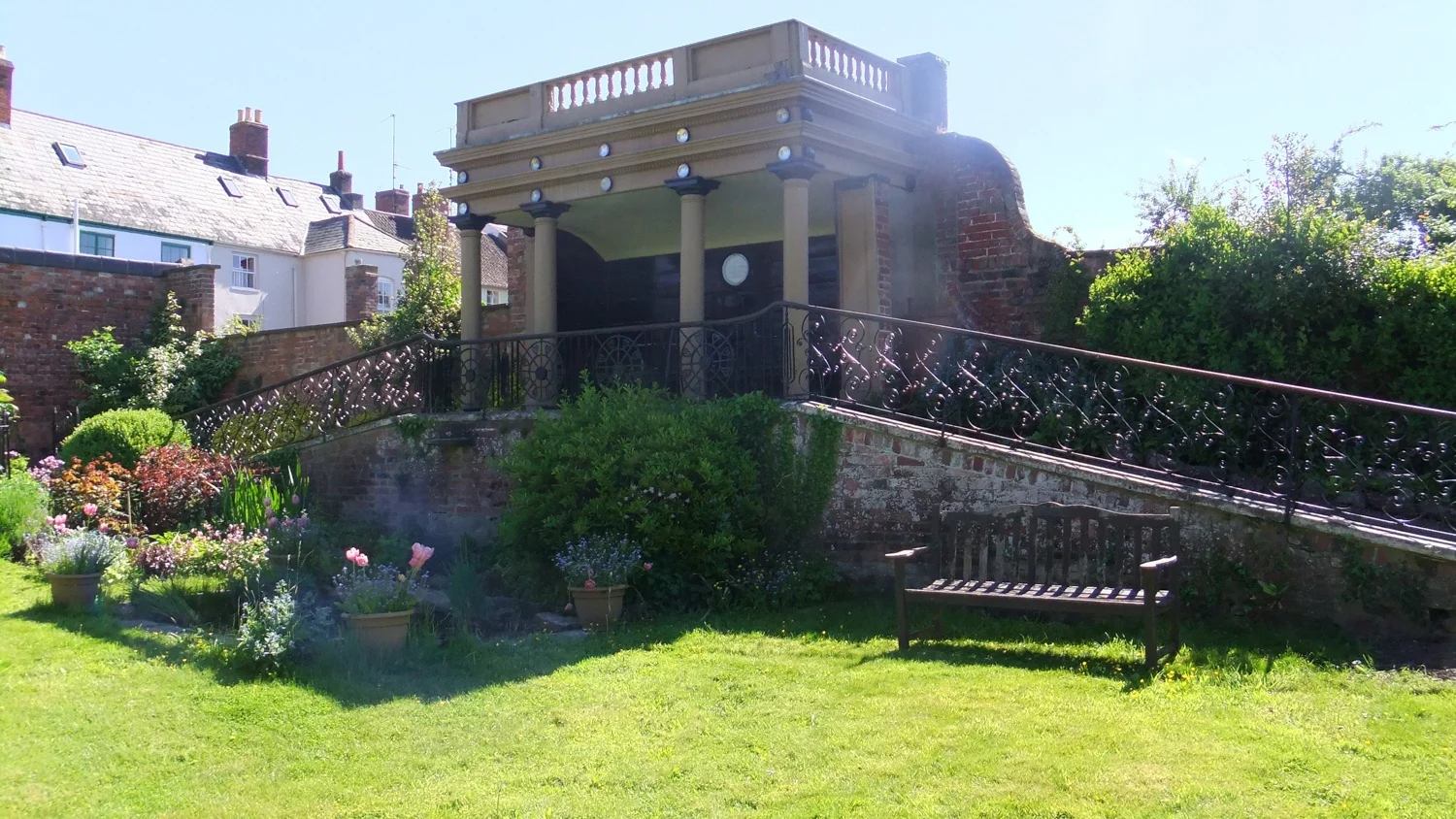


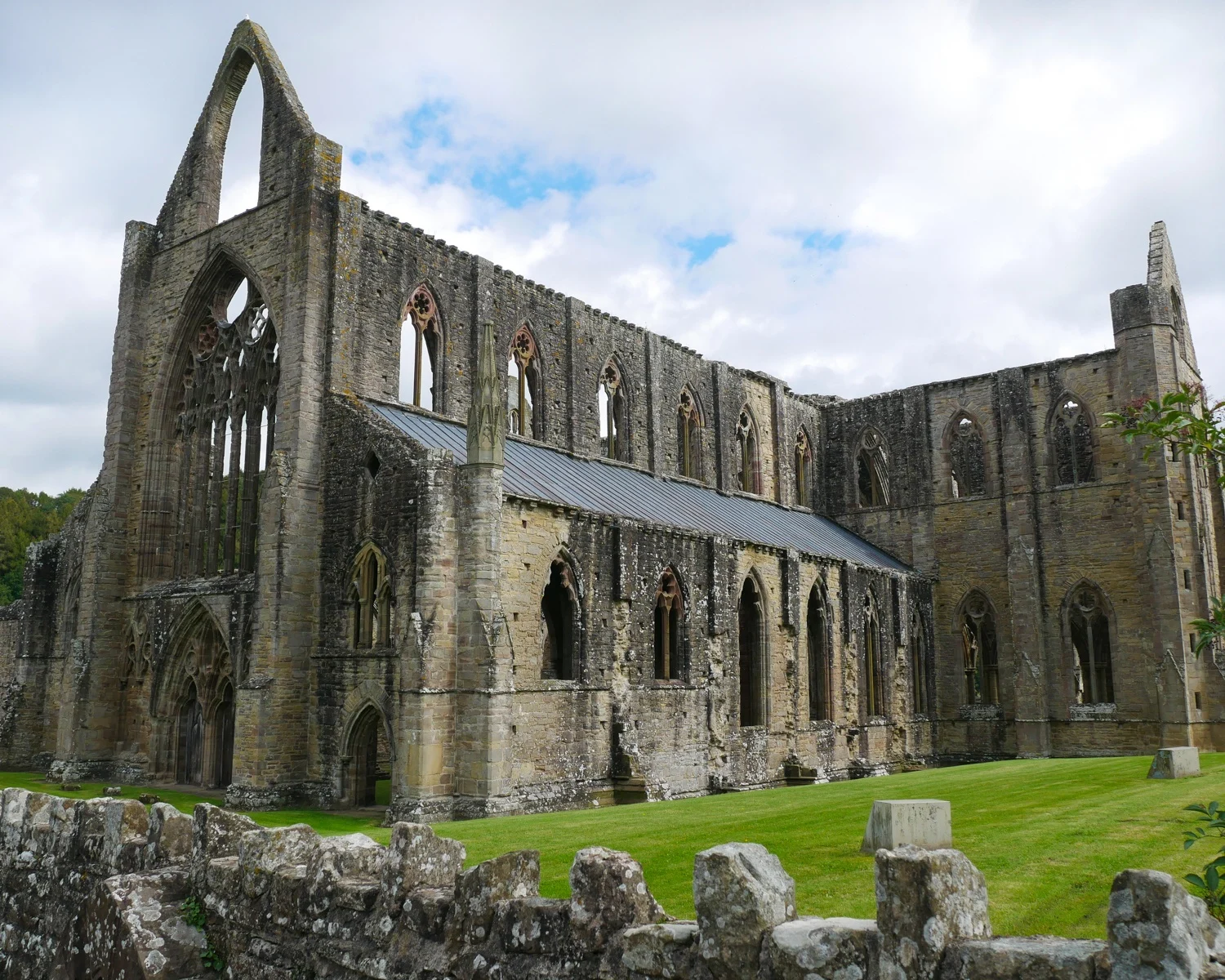














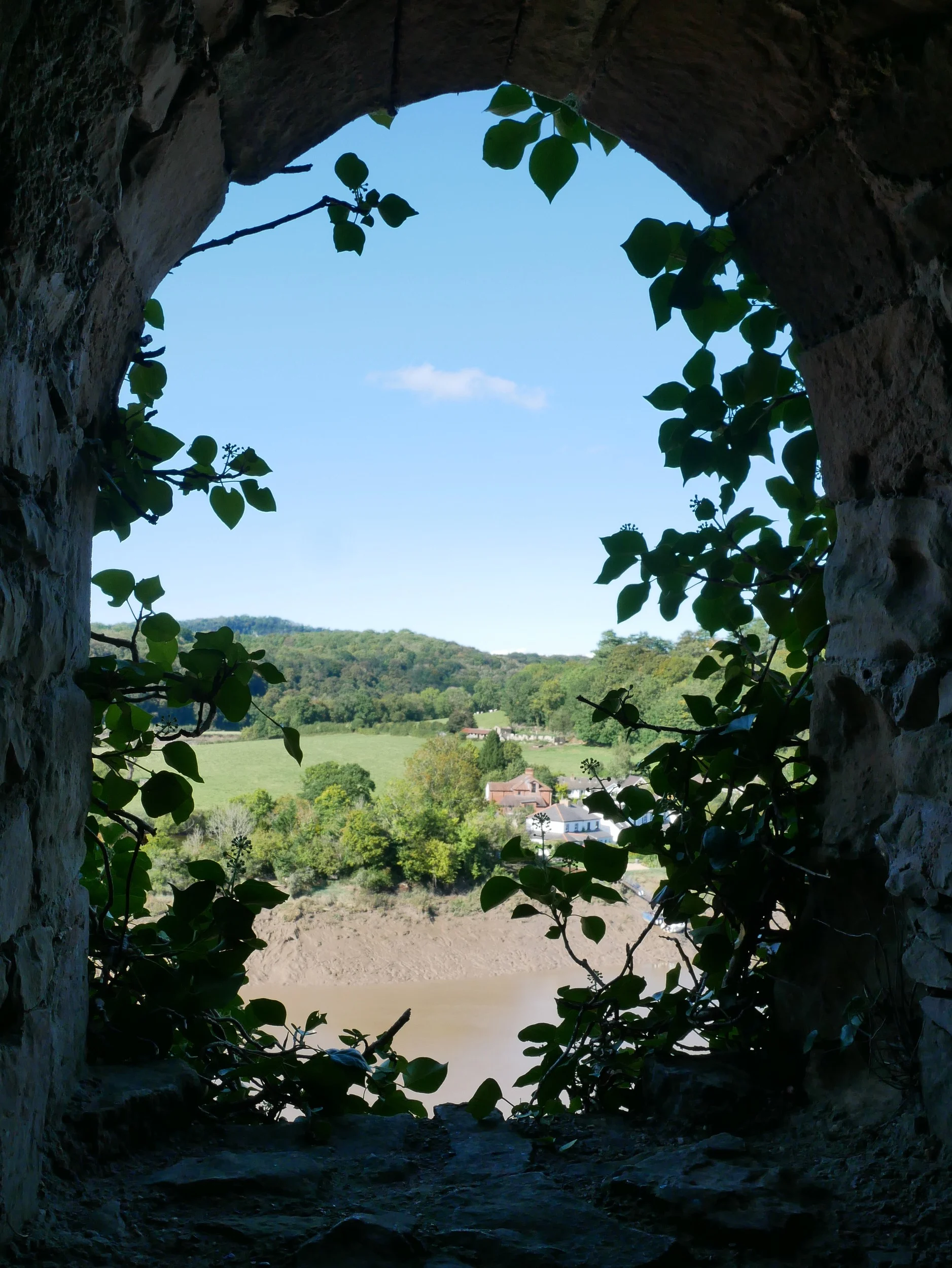


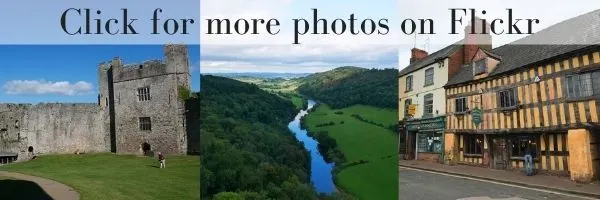





Bryson Fico
Monday 29th of March 2021
Very descriptive blog. Your photographs showcase the Wye Valley very well with the castles and quaint shops. The riverside walk and the Kingstone Brewery are on our list of stops.
Heather Cowper
Sunday 23rd of May 2021
@Bryson Thanks, the Wye Valley has so many beautiful stops!
Ankit Acharya
Monday 1st of February 2021
Beautiful, breadth taking, seriously I have no more words to describe how beautiful is this places. This post is encouraged me to explore this places and I am now saving money to travel this places. Thanks for sharing such an amazing pictures and for your guidance.
Heather Cowper
Monday 15th of February 2021
@Ankit So pleased you enjoyed the article